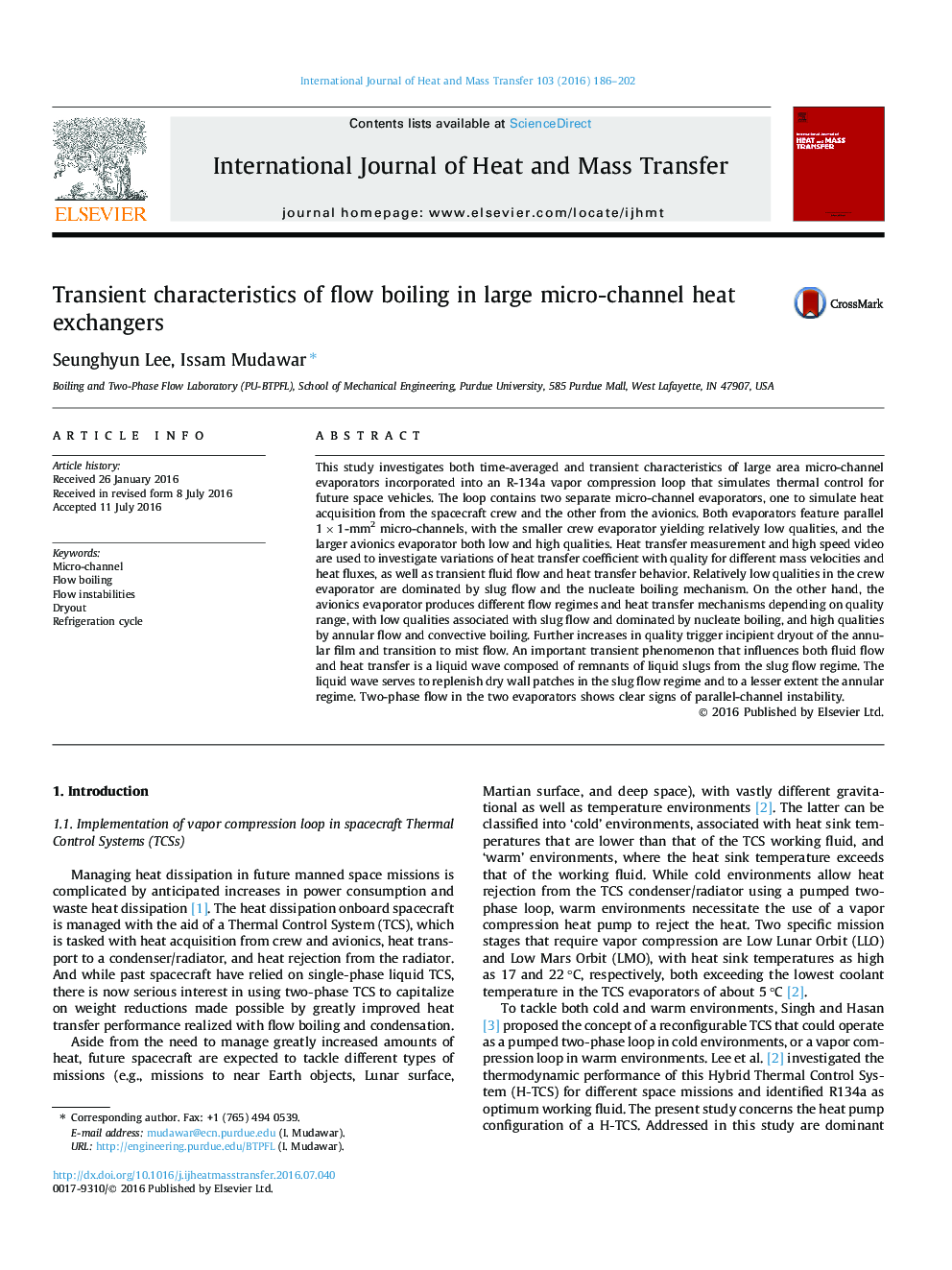| Article ID | Journal | Published Year | Pages | File Type |
|---|---|---|---|---|
| 7054980 | International Journal of Heat and Mass Transfer | 2016 | 17 Pages |
Abstract
This study investigates both time-averaged and transient characteristics of large area micro-channel evaporators incorporated into an R-134a vapor compression loop that simulates thermal control for future space vehicles. The loop contains two separate micro-channel evaporators, one to simulate heat acquisition from the spacecraft crew and the other from the avionics. Both evaporators feature parallel 1Â ÃÂ 1-mm2 micro-channels, with the smaller crew evaporator yielding relatively low qualities, and the larger avionics evaporator both low and high qualities. Heat transfer measurement and high speed video are used to investigate variations of heat transfer coefficient with quality for different mass velocities and heat fluxes, as well as transient fluid flow and heat transfer behavior. Relatively low qualities in the crew evaporator are dominated by slug flow and the nucleate boiling mechanism. On the other hand, the avionics evaporator produces different flow regimes and heat transfer mechanisms depending on quality range, with low qualities associated with slug flow and dominated by nucleate boiling, and high qualities by annular flow and convective boiling. Further increases in quality trigger incipient dryout of the annular film and transition to mist flow. An important transient phenomenon that influences both fluid flow and heat transfer is a liquid wave composed of remnants of liquid slugs from the slug flow regime. The liquid wave serves to replenish dry wall patches in the slug flow regime and to a lesser extent the annular regime. Two-phase flow in the two evaporators shows clear signs of parallel-channel instability.
Related Topics
Physical Sciences and Engineering
Chemical Engineering
Fluid Flow and Transfer Processes
Authors
Seunghyun Lee, Issam Mudawar,
